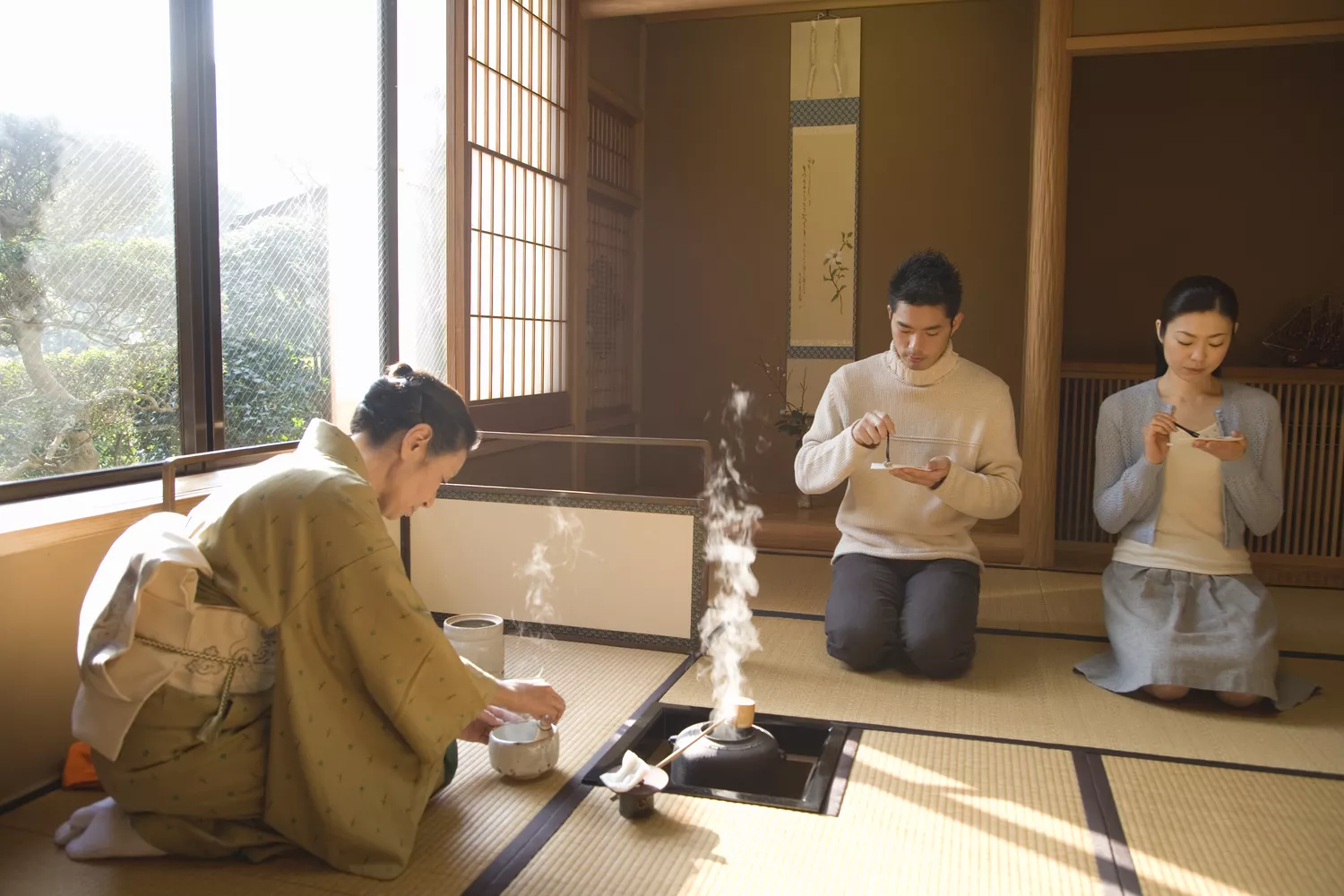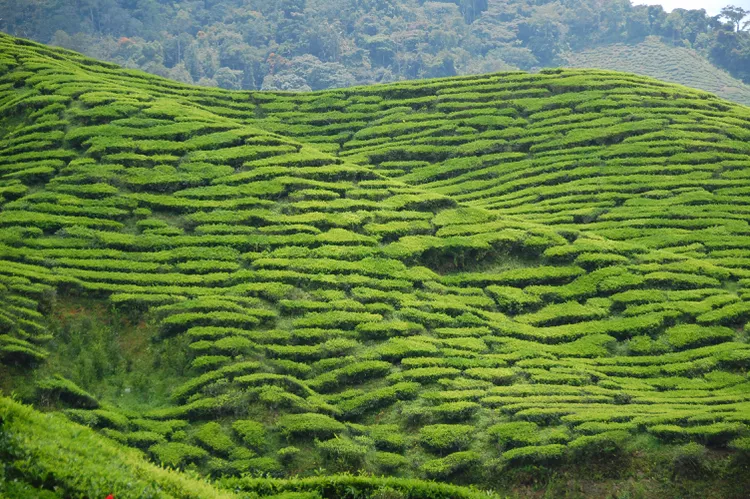Summary
A History of Tea, the World’s Most Consumed Beverage
Unlike in the West, where a mass-produced bag is haphazardly steeped in boiling water, tea in Asia is taken much more seriously. In fact, the history of Asian tea dates back to the very beginning of recorded history!
Moreover, the act of pouring tea in Asia has been refined into an art that takes years of discipline to perfect. Different varieties of tea are brewed at specific temperatures for exact amounts of time to achieve the perfect cup.
The tea culture in Asia knows no limits. From meeting rooms in Tokyo skyscrapers to the smallest huts in remote Chinese villages, a steaming pot of tea is being prepared at any given moment! Consequently, as you travel throughout China and other countries, you’ll often be offered a cup of tea for free.
The History of Tea
So, who first decided to steep leaves from a random shrub to create a drink that is second only to water in consumption?
Although credit is generally given to the border areas of East Asia, South Asia, and Southeast Asia—specifically the region where India, China, and Burma meet—no one is really sure who decided to steep the first tea leaves into water. The act possibly predates written history. Genetic studies of the Camellia sinensis plant suggest that the first tea trees originated near North Burma and Yunnan, China.
Regardless, all can agree on one thing: Tea is the most widely consumed beverage in the world, even surpassing coffee and alcohol.
The first written evidence of making Asian tea dates back to a Chinese work from 59 B.C. Historical records exist that tea later spread east to Korea, Japan, and India during the Tang dynasty in the ninth century. The techniques used to brew tea advanced over time, depending on the preferences of each dynasty.
Initially, tea began as a medicinal drink but slowly evolved into a recreational beverage. Notably, Portuguese priests first carried tea from China to Europe during the 16th century. Tea consumption grew in England during the 17th century and became a national passion in the 1800s. As the British empire expanded, so did the global love for tea.
Producing Tea
China is unsurprisingly the world’s top producer of tea, with over a million tons produced annually. India comes in a close second, with tea revenues providing a significant 4 percent of their national income. India alone has over 14,000 sprawling tea estates, many of which offer tours for visitors interested in the tea-making process.
Interestingly, Russia typically imports the most tea, followed closely by the United Kingdom.
Interesting Facts About Tea
- All varieties of tea come from parts of the same plant: Camellia sinensis.
- Turkey is the leading consumer of tea in the world, per capita.
- Asians refer to black tea from the West as “red tea.”
- Tea plants can grow into trees up to 50 feet tall if not pruned.
- A tea plant takes at least three years to produce leaves, and slower-growing plants yield tea with more body and flavor.
- The smaller a tea leaf, the more expensive the tea. Workers are typically paid by the kilogram of tea leaves picked, leading them to pick many more leaves for the same payout.
- Tea tree oil, known as melaleuca, comes from a shrub native to Australia and is toxic if swallowed. It’s named due to Captain Cook steeping leaves from the shrub as a substitute for tea.
Tea in China
The Chinese possess a deep and passionate love affair with tea. The formal tea ceremony, known as gong fu cha or literally the “kung fu of tea,” exemplifies this affection. From shops and hotels to public transportation stations, expect to receive cup after cup of green tea, usually complimentary!
Outside of formal settings, Chinese tea typically consists of a pinch of green tea leaves dropped directly into a cup of kai shwui (boiling water). Hot-water taps for tea preparation can be found in trains, airports, receptions, and most public waiting areas.
Furthermore, China has developed a wide variety of teas believed to enhance health. Among them, Long Jing (Dragon Well) tea from Hangzhou is particularly celebrated as China’s most famous green tea.

Tea Ceremonies in Japan
Tea was introduced to Japan from China during the ninth century by a traveling Buddhist monk. Japan harmonized the act of preparing tea with Zen philosophy, creating the renowned Japanese tea ceremony. Today, geisha train from a young age to master the art of making tea.
Each tea gathering is considered sacred (known as ichi-go ichi-i) and follows meticulous tradition, adhering to the belief that no moment can ever be repeated in its exactness.
The philosophy of using the practice of tea-making to improve oneself is referred to as teaism.

Tea in Southeast Asia
In Southeast Asia’s Islamic countries, tea substitutes for alcohol as the preferred social drink. Locals gather in Indian Muslim establishments known as mamak stalls to cheer over soccer matches while enjoying teh tarik—a frothy mixture of tea and milk. Achieving the perfect texture for teh tarik requires pouring the tea theatrically through the air. Annual pouring competitions are held in Malaysia, showcasing the world’s best artisans who juggle tea without spilling a drop!
Tea enjoys slightly less popularity in Thailand, Laos, and Cambodia, possibly due to the tropical climate, although Vietnam consistently ranks among the top tea producers worldwide.
Travelers in Southeast Asia may often find disappointment as “tea” is typically a sugary, processed beverage available at convenience stores. In restaurants, tea often consists of an American-brand teabag provided with hot water. Furthermore, “Thai tea” traditionally originates from Sri Lanka and is mixed with abundant sugar and condensed milk.
The Cameron Highlands in West Malaysia offer the ideal climate and elevation for tea cultivation. Verdant, sprawling tea plantations hug the hills, while workers carry enormous 60-pound bags of leaves. Many plantations near Tanah Rata in the Cameron Highlands provide free tours.
Enjoying Sustainable Tea
Like many consumables we enjoy, getting that tea from Asia to your cup involves a lot of hard work and potential exploitation.
In numerous regions, tea workers are severely underpaid and work in harsh conditions, often earning just a few dollars a day. Child labor poses a significant issue. Workers are compensated by the kilogram of tea they pick, indicating that a substantial quantity of small leaves is needed to amass any considerable weight.
Consequently, the cheapest tea brands often originate from companies that profit from the suffering of workers. Unless a tea product is certified by a respected fair trade organization (e.g., Rainforest Alliance, UTZ, and Fairtrade), you can conclude that the laborers likely did not receive a living wage for their efforts.
The Indian government has designated December 15 as International Tea Day to raise awareness of the challenges faced by tea workers around the globe.





